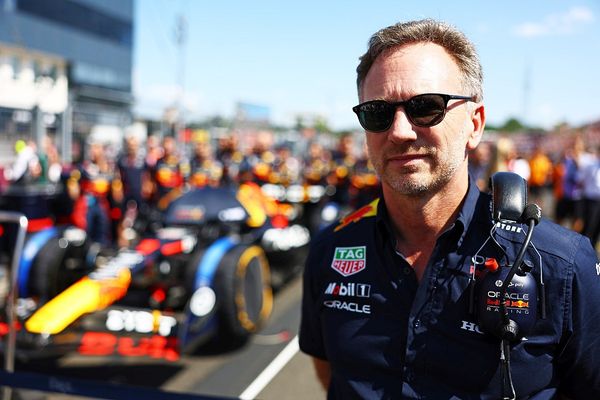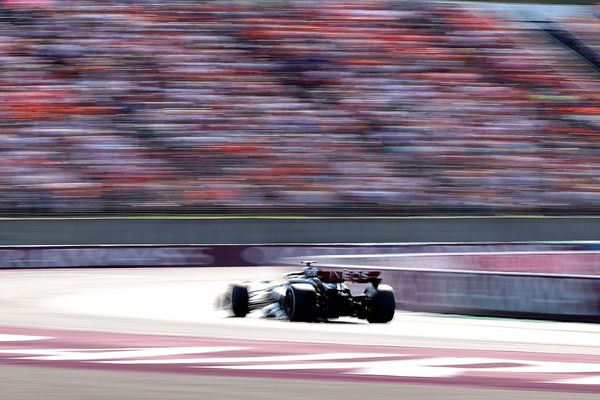
The subject of extra 'capex' headroom within the FIA financial regulations has emerged in recent months as a way of attempting to level the playing field, and thus any decision could have a significant impact on grand prix racing in future years.
Over the Budapest weekend a new idea emerged that will see the specific requirements of teams examined and approved by the FIA on a case-by-case basis, rather than giving all teams the same opportunity to spend more.
The options are set to be discussed in a meeting on Monday of F1’s financial advisory committee [FAC], the forum where the rules are discussed by the teams, generally represented by their chief financial officers.
A definitive vote of team principals will then be taken at Friday’s gathering of the F1 Commission at Spa, although there is currently a governance discussion about whether the subject requires a simple majority of five teams, or a super majority of eight teams.
The subject has become a matter of debate since the financial regulations were introduced because those teams that were historically underfunded and whose infrastructure didn’t keep pace with that of wealthier rivals have now found themselves unable to spend what they need to on new facilities, and thus it’s harder for them to close the performance gap.
Teams such as Williams, McLaren, Alfa Romeo, AlphaTauri and Alpine all have requirements of varying degrees, and have been keen to see an extra allowance that will enable them to invest in the sort of facilities that they need to compete consistently at the top level.
A special dispensation has already been made within the financial regulations for investment in new wind tunnels, which has helped both Aston Martin and McLaren embark on the projects that are currently taking shape at their respective factory sites.
However teams also want to upgrade facilities such as simulators, gearbox dynos and rigs in order to match the capabilities of Red Bull, Mercedes and Ferrari, and have been pushing for a way to be allowed to make those new investments.

The complication in terms of reaching an agreement is that the established top teams are naturally wary about helping rivals to become stronger.
Meanwhile, some of those who need to upgrade suggest that if the big teams get the same extra allowance they will also simply spend it on even better equipment, and thus maintain the status quo.
In effect they want something akin to the sliding scale for aero testing, with the teams in need getting more headroom to spend than those at the top, possibly with historical financial numbers used to help determine how such a system could work.
An alternative view is that the top teams already have what they need, and thus if the allowance is the same for everyone any extra investment they make on new equipment will produce marginal gains compared to the benefits available for teams that have fallen behind the times.
Finding a way to help only those teams that need an infrastructure boost has been an ongoing topic of debate.
Williams boss James Vowles, whose team faces the biggest discrepancy in terms of the outdated facilities at Grove, remains confident that a solution will be found.
"I think there's good discussions, let's put it that way,” Vowles told Autosport.
PLUS: The hidden cost cap rules hindering Williams' F1 progress
“It isn't that we're sat here not having good discussions. We are, but it's where the compromise or the complexity is, and we're trying to find a system that works for everyone.
“And that's becoming awfully difficult at the moment, because and rightly so each team has its own particular set of requirements for this.

“Ours is incredibly different to most, for obvious reasons. Ours is different to Red Bull, Mercedes, and Ferrari, which is different to Alpine and McLaren. You can see where people are in the grid as to what they have.
“But irrespective, we're not in a bad place, everyone's talking. I’m still hopeful, because we're getting positive discussions, just as always with these things we're running out of time. Friday is when we have to decide it all.”
Vowles says that there are in essence now two alternative paths, with the latest idea being to consider each team’s needs for specific upgrade projects and allocate a 'capex' allowance accordingly.
“There's a FAC taking place on Monday, which I think will be a very good starting point to discuss, really, what I'd say is one of two options on the table,” said Vowles.
“One is just a blanket let's just raise the capex amount, the same for everyone. Which doesn't necessarily mean that we're catching up.
“But really, the amount that Mercedes, Red Bull, Ferrari can spend is significantly less than the amount that we can, as in they already have facilities beyond your dreams. So I think it will allow an amount of catch up.
“And the second is a list mechanism where the FIA will come around and we'll say, ‘look, we're missing this, this is out of date,’ and they'll tick the boxes, and say there you go, there's X million.”
In effect there will transparency as the extra spending will be allocated to specific projects that teams want to pursue.
"That's what I like about it, it's a bit more understood,” said Vowles.

"Both options have pros and cons. But you'll already notice by the nature of that we're trying to find something that works for everyone. It's always going to be difficult.”
Other team bosses outside the established top players are keen to have more opportunity to spend.
“There's a couple of options in terms of how you change this regulatory framework,” said McLaren’s Andrea Stella. “In general, we are supportive of a little expansion of the expenditure.
“So that's our position at the moment, we will see what the majority of the teams will vote for.”
“Currently, our situation is that we will agree to this,” said Franz Tost of AlphaTauri. “Because I think that the infrastructure is a very important performance differentiator, and if you have more money to spend there, this will also help to increase the performance of the car. Therefore, we are in favour of it.”
Alpine team principal Otmar Szafnauer is also keen to see a capex allowance introduced, with the Enstone outfit eyeing a major gearbox dyno project that it wants to put in place. However, Szafnauer concedes that some rivals need more help,.
“We don’t need as much as some others,” he said. “When the FIA asked me what we would vote for, I am not so selfish to say I just want what I want, and you guys can’t.
“What it is about is having it be a level playing field. There are a couple of scenarios on the table now and I hear there may be a third in the meeting, so I will vote accordingly.
“It just needs to be a level playing field. The infrastructure that we have and the tools that we have are really important to find performance, and we need to have similar tools.

"The cost cap is a good thing, but we didn’t think all that through at the time of freezing everything.”
Szafnauer noted recently that the NFL provides an interesting template for how F1 can try to level the playing field.
F1 teams that want to see change were given extra encouragement after a recent meeting with the head of the organisation.
“It’s important to see the bigger picture,” said Szafnauer. “In Canada Liberty and F1 invited the teams to meet with Roger Goodell, the commissioner of the NFL. His big message was what the NFL has done since the mid-60s has been focused on getting the NFL itself to a much, much higher level.
“And with doing so, every one of the teams that is part of the NFL also went to a higher financial level. That was basically his message.
“They have a salary cap, and they also have the draft, where the bottom team gets the best player, and all that kind of stuff. In fact that’s where our aerodynamic testing restrictions concept came from, the sliding scale of the ATR, so that if you finish last, you get more wind tunnel time.
“And Roger said to us that yes, F1 has broken through in the US now, but make sure that you focus on taking the next steps to get it to a higher level everywhere around the world, and especially in America.
“And he said that if you can do that with the entire series, all the teams will benefit too.
"Capex equalisation goes towards being able to do that – closer racing, better racing, not having just one team winning all the time. And then if the fans enjoy it more, it raises the entire sport.”










